Abstract
Contents
- Introduction
- 1. Relevance of the topic
- 2. Purpose and research problems
- 3. Summary of work
- Conclusion
- References
Introduction
Now in Ukraine formations of the market relations of managing it isn't accompanied almost by the corresponding reforming of the sphere of interaction of society and the nature though the saved up international experience testifies to impossibility of achievement of high level of social and economic development without greening of the economic relations. Greening is carried out through system of organizational actions, innovative processes, restructuring of the sphere of production and a consumer demand, technological conversion, environmental management rationalization, transformation of the nature protection activity, carried out both on macro, and at a microeconomic level. At macrolevel restructuring nature protection a grocery vertical of economy is priority, and at microlevel is a development of low-waste technologies and the equipment, resource-saving, and also introduction of systems of complex and rational environmental management.
Especially the importance has the aforesaid for the natural operating industries one of which is the coal sphere. Its economic activity is directly connected with development prirodno the resource potential of a subsoil for the purpose of receiving the final product – coal. The huge number of in passing got firm, liquid and gaseous products which were characterized until recently as waste is at the same time formed. A significant amount of such waste allows to consider them as technogenic fields which negatively influence environment. At the same time in their contents there is a huge number of useful chemical elements and connections.
In the light of above-mentioned "attributes" and mechanisms of greening subsurface use and environmental protection optimization is expedient. It is a question of rational use and protection of a subsoil in use natural resources, filling of their stocks, resource-saving, complex use of mineral resources of a subsoil and technogenic fields.
Thus, it is a question of transformation of coal branch with monogrocery in полипродуктову. Physical and chemical base for implementation of such transition is as a target product of production – coal, and passing products of production, and the instrument (mechanism) of realization – process of diversification of economic activity. Speed of transformation of coal branch in полипродуктову has no technological restrictions and is defined, first of all, by financing of this process.
Development of the industry of processing and recycling on modern scientific and technical and technological bases in a context of innovative model of a sustainable development will allow to resolve in a complex environmental, economic and social issues of reorganization of an economic mechanism of mountain branch. In particular, a positive consequence of such approach is increases in volume of coal mining and its quality, growth of competitiveness of the coal-mining enterprises, decrease in their unprofitability, increase of profitability and investment appeal[8].
1. Relevance of the topic
The problem of waste is very actual for Donetsk region, in view of technogenic load of this territory and volumes of the industrial wastes which are forming. Expediency of processing of waste in our region is caused by the following factors:
• natural, allowing thanks to soft climate to develop dumps practically all year;
• social, connected with closing of mines also it is released a large number of able–bodied population;
• economic, connected with big need of the densely populated industrially developed region for construction materials, and also existence of well developed infrastructure that considerably facilitates introduction of proposed technical solutions.
2. Purpose and research problems
The purpose of this master's thesis is carrying out the detailed analysis and calculation of ekologo-economic efficiency of expenses for introduction and operation of technology of use of waste of mine for production of construction production, construction of a road cloth, breed use for soil fertilizer.
The main problem of a master's thesis is determination of expediency of introduction of technology of use of mine breed for production of construction production.
3. Summary of work
Feature, it is characteristic for Donetsk region, accumulation of numerous dumps, waste heaps, ash dumps, tailings dams in which huge quantities of mine breeds and zoloshlakovy waste (fig. 1 are stored is; fig. 2). Placement of technogenic massifs demands rejection of considerable territories. Waste is environmental pollution sources, creates round itself defeat zones, in hundreds times exceeding the areas which borrow. Huge amounts of money are spent for construction of dumps, warehousing of waste and nature protection actions for decrease in their negative impact. Therefore, recycling of production and burning of coal is important technical эколого – an economic task.
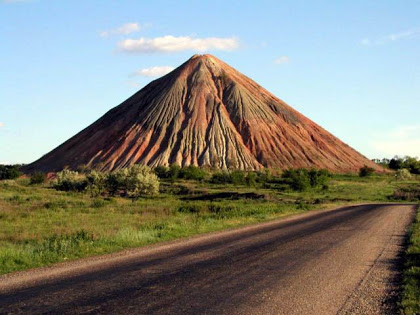
Figure 1 – Terrikon received as a result of human activity
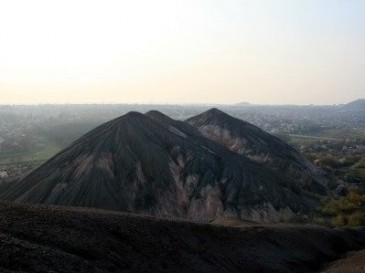
Figure 2 – Zolootval
From enrichment processes, gasification or burning in a boiling layer it is the most expedient to use the rests in three directions: for a bookmark of the developed space, as raw materials in manufacture of building materials and knitting substances or mineral fertilizers.
Waste of coal manufacture is potential raw materials for manufacturing, a brick, various building materials, for manufacture of cement, fillers, building solutions etc.
Production let out of a waste, on quality does not concede to products from traditional natural mineral raw materials. Technologies offered for today allow to receive materials with the raised durability, frost resistance, wear resistance, stability to atmospheric influences and influence of excited environments. On physicomechanical properties and technical characteristics materials correspond to all requirements of standard documents.
Thanks to it technogenic the raw materials win more and more positions in the industry of building materials. For increase of efficiency of activity of mine in sphere of the reference with a waste it suggested to introduce technology on use of a waste and manufacture from them building materials.
On production technology building blocks are divided into several types: cinder blocks, foam concrete blocks, sand concrete or sand-cement blocks (piskobloky) gas silicate blocks or concrete blocks zkomirchastogo, expanded clay blocks(fig. 3; fig. 4).
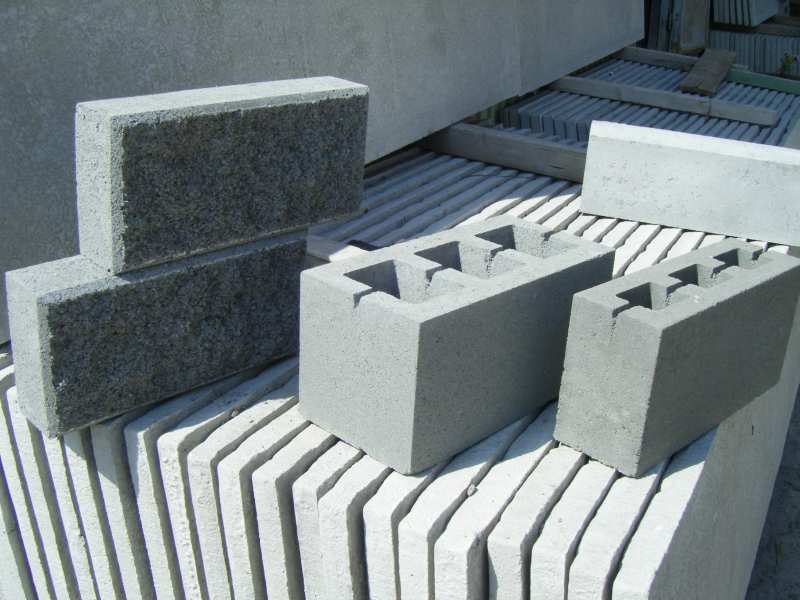
Figure 3 – Concrete blocks, expanded clay concrete blocks and belt tiles
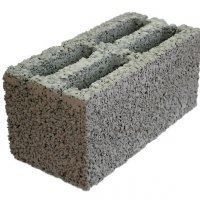
Figure 4 – Sand–cement block
Their application in building has following advantages: technological advantages, speed of installation in 4,5 times above; a construction of walls demands in 2,2 times less a mix; remarkable sound insulation; on volume the block replaces 6 pieces Red a brick, and taking into account heat conductivity – 12 pieces of Increase in a useful area of a premise with 5 % at the expense of reduction of a thickness of walls, the weight in 1 sq. M of a laying in 1,5 times is easier, as a result loading on the base in 2 times is less, various colours – grey, green, yellow, red etc.; economy on costs; the building cost price on 30 – 40 % more low; ecological cleanliness making blocks.
In view of advantages blocks it suggested to introduce their manufacture from a mine waste and on the basis of an ekologo–economic justification to choose the best kind of production.
The widespread production technology blocks consists of following stages:
1. Preparation of a rigid concrete mix.
For preparation of a solution of a rigid concrete mix are used: cement, slag (elimination) and water. At us in region (depending on humidity ) the rigid solution turns out at mixing from 0,4 to 1 part of the water equal to a part (on weight) cement of m 400 and from 4 to 9 (usually 5–7) elimination parts (rubble, slag,).
It is better to prepare a solution in a concrete mixer, or manually shovels in any capacity or on a platform (but for preparation of a rigid mix it is required considerable physical efforts). The temperature indoors or on a platform where blocks are spent, should be above 1 °С with.
2. Loading, consolidation and removal of a solution from the form.
Solution loading in forms, and then occurs consolidation in shape by means of vibration and a clip and removal of the form with the block on a floor or the pallet. The rigid solution after allows the received block not to be scattered and hold the form "independently" and "not float" during drying.
3. Conditions of full hardening and a durability set.
Conditions at which the block completely hardens, are very simple and accessible. They do not demand any special constructions or adaptations. Necessary level of durability, is required for warehousing, storage, use and realisations of blocks, is reached at natural temperature. It lasts from 36 till 96 o'clock (without application of special additives). If in a concrete mix such substances, as others time to full readiness of the block, is reduced in advance have been added. Full hardening of blocks occurs within a month.
The temperature should be from 20 degrees and above and observance of a condition of high humidity. Humidity – as much as possible high. This indispensable condition, differently process of a set of durability can pass in "drying" process (so to say "combustion"). And it will lead to considerable loss of durability and product deterioration. At temperature 20–25 °С About a product reaches a necessary set of durability in 20–25 hours.
For manufacture of blocks and other building products following components are used: knitting substance, , water, chemical additives – softeners and concrete modifiers (on request of the customer). As knitting substance can be used both low, and high marks, and also plaster which slowly hardens.
As a filler in any combinations sand, rubble elimination, slag, ashes, sawdust, peat, expanded polystyrene granulated, a marble crumb, brick fight etc. At temperature 20–25 °С With products occurs in 20–25 hours. It is recommended to use marks 400 (пц m 400). At use of cement of mark 300 expense of cement should be increased by 10 %, cement use of the five–100–th mark allows to lower its expense on 10–20 %.
On manufacture of a mix following materials are necessary for blocks:
• cement М–400,
• a waste of coal output,
• water,
• softener.
The additive promotes reduction of a parity "water–cement", to a fast set of durability in an initial stage, essentially raises fluidity and possibilities it is convenient to consist a concrete mix.
For manufacture of blocks we had been chose the equipment "Kondor–1" – small–sized the mechanised installation for manufacture a concrete stone, a tile and other products(fig. 5) [4].
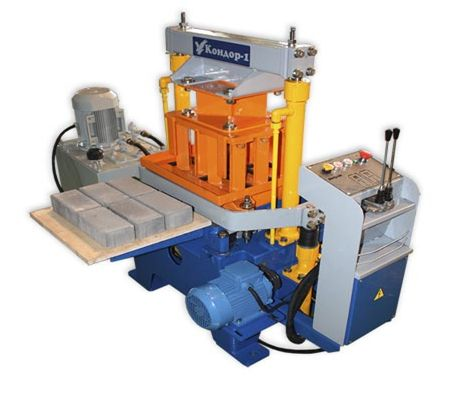
Figure 5 – the Equipment "Kondor–1" for manufacturing blocks
Block–diagram of the process of building blocks from waste coal industry (fig. 6)

Figure 6 – Block diagram of the technological process of production units
(animation: 9 frame; 6 repeat cycles; 80 kb)
Into installation structure enters a control panel, an electrocase, 5 pallets. The amalgamator and matrixes do not enter into equipment cost. Thus, for production except the following equipment is required:
• a crusher;
• a roar;
Manufacture we will arrange on the core е mines. The operating pedigree sailing is close from this platform. Also there there is an electrosubstation for supply of electricity. From mine the pipeline water stands out, arrives in a sediment bowl located also at . That is, there are all conditions for the manufacture organisation.[3]
Also for manufacture raw materials and materials are necessary following:
• cement – mark М–400;
• breed;
• an additive «С–3»;
• water;
• the electric power.
Expenses of materials depend on density of received production
Tile and other products
Conclusion
As a result of carrying out analyses the conclusion is drawn on expediency of introduction of technology of use of mine breed for production of construction production for the purpose of increase of efficiency of ekologo–economic activity of the enterprise and three types of effect are defined: ecological, social and economic.
The ecological effect consists in that that:
– emissions of harmful substances in environment as a result of breed use instead of its placement decrease by territories.
Economic effect consists in:
– receiving profit from sale of the wall blocks made from rock;
– reduction of an ecological tax for environmental pollution which is paid to the state to the budget.
Social effect:
– new workplaces are provided;
– reduction a population disease in близи a sanitary protection zone of a pedigree dump;
– improvement of living conditions of the population of the adjacent territory of a pedigree dump;
– increase in labor productivity.
References
- Экология и закон: экологическое законодательство Украины. В 2–х кн. / Под ред. В.И. Андрейцева. – М.: Юринком Интер, 1997. – 704 с.
- Андрейцев В.И. Экологическое право: курс лекций. – М.: Вентури, 1996. – 208 с.
- Комплексное освоение угольных месторождений Донецкой области / А.И. Амоша, В.И. Логвиненко, В. Гринев. – Донецк: ИЭП НАН Украины, 2007. – 176 с.
- Гирусов Э.В. Экология и экономика природопользования: учебник для вузов, – М.: Закон и право, ЮНИТИ, 1998. – 455 с.
- Гребенкин С.С. Сохранение окружающей природной среды на горнодобывающих предприятиях / С.С. Гребенкин, В.К. Костенко, Е.С. Матлак, М.Н. Шафоростова. –Донецк: «ВИК», 2009. – 505 с.
- Колотило Д.М. Экология и экономика: учебное пособие для вузов / Д.М. Колотило. – М.: Финансы, 2005. – 576 с.
- Макарова Н.С. Экономика природопользования: учебное пособие для вузов / Н.С. Макарова, Л.Д. Гармидер, Л.В. Михальчук. – К.: ЦУЛ, 2007.– 451 с.
- Концепция программы «повышение эффективности использования энергоресурсов Украины» / А.В. Пешко, Н.Г. Белопольский, Д.К Турченко – М. – 2005. – 55 с.
- Организационно–экономические инструменты эффективного недропользования / М.Н. Шафоростова / / Проблемы экологии. – Донецк: ДонНТУ, 2007. – № 1,2. – С. 139–143.
- Шафоростова М.Н. Экономические инструменты комплексного использования недр / / Вестник Донецкого горного института. – Донецк: ДонНТУ, 2008. – № 1. – С. 83–86.
- Шевчук А.В.Экономика природопользования (теория и практика). – М.: Ниа–природа, 2000.– 311 с.
